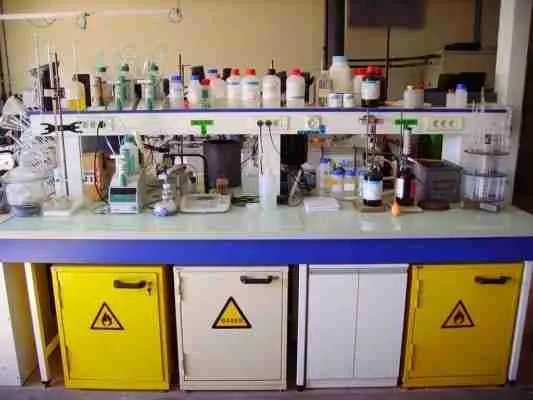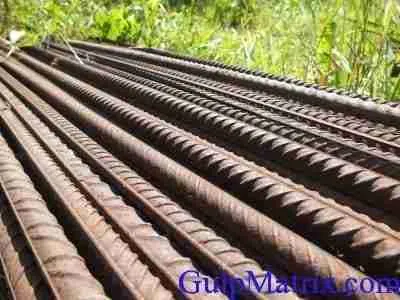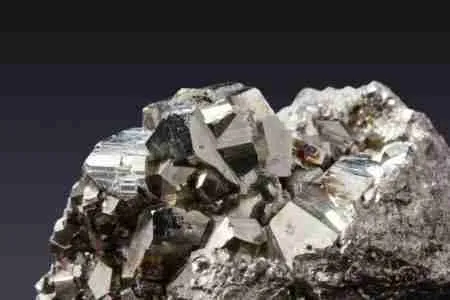Importance of Stoichiometry and Electronegativity in Chemical Reactions

Stoichiometry is the art of measuring chemical elements in quantitative relationship in chemical reactions. It is ordinary chemical arithmetic. Experiments can be designed to study the stoichiometry of reactions. The types of reaction that are commonly studies include
- Precipitation reactions;
- Displacement of hydrogen from acids;
- Displacement of metallic ions;
- Synthesis of metallic oxides; and
- Reduction of metallic oxides.
Stoichiometry of a Precipitation Reaction
When solutions of barium chloride and potassium tetraoxochromate(VI) are mixed, a precipitate of barium tetraoxochromate(VI) forms instantly. By using molar solutions of the reactions, it is possible to find the ration in which they combine.
Stoichiometry of Hydrogen Displacement from an Acid
Magnesium readily displaces gaseous hydrogen from dilute hydrochloric acid. To study the stoichiometry of this reaction, we react a known mass of magnesium with an excess of the acid, and measure the volume of hydrogen liberated.
Set up the apparatus as shown in equalize the water levels in the aspirator bottle and the cylinder by raising or lowering the cylinder. Record the volume of water in the cylinder. Tilt the conical flask and let the acid react with the magnesium. The hydrogen gas given off will displace its own volume of water from the bottle into the cylinder. Allow the apparatus to cool and equalize the water levels in the cylinder and bottle. Record the volume of water in the cylinder. The difference in the two volumes gives the volume of the hydrogen gas evolved. Note the atmospheric pressure and room temperature.
Specimen Readings
Mass of magnesium = 0.36g
Volume of hydrogen displaced = 378cm3
Room temperature = 250C
Atmospheric pressure = 755mm Hg
Molar mass of mg = 24g
From the readings given, we can calculate the mole ratio of the magnesium and hydrogen in this reaction in the following way;
Let V2 be the volume of hydrogen obtained experimentally at s.t.p.
T1 = (25+273) K – 298K T2 = s.t. = 273K
P1 = 755mm Hg P2 = s.p. = 760mm Hg
V1 = 378cm3
Molar volume of any gas = 22.40dm3 i.e 2240cm3 = 1 mole H2
.15 mole of Mg displaces 0.015 mole of H2 from the acid.
Reacting substance: Hydrogen Magnesium
Amount of moles: 0.015 mol 0.015mol
Mole ratio:
One mole of magnesium atoms liberates one mole of hydrogen molecules from dilute hydrochloric acid (i.e it displaces two moles of hydrogen atoms from the acid). the equation of the reaction can now be written.
Equation
Mg(s) + 2HCI(aq) → MgCI2(aq) + H2(g)
Mole ratio 1: 2: 1: 1:
Stoichiometry of the Displacement of Copper Ions by Zinc Metal
Zinc displaces copper (II) ions from a solution of copper(II) tetraoxosulphate(VI). To study the stoichiometry of this reaction, we find the mass of metallic copper displaced by a known mass of zinc dust.
Place a known amount of zinc dust in a test-tube Pour concentrated copper(II) tetraoxosulphate(VI) solution, a little at a time, onto the zinc dust (with intermittent shaking of the tube) until the latter is completely replaced by a reddish-brown deposit of copper. Add an excess of the copper(II) tetraoxosulphate(VI) solution to ensure that all the zinc dust has reacted. Filter the mixture in the test-tube. Dry the copper residue on the filter paper and find its mass.
Specimen reading sand calculation
Mass of zinc dust = 3.93g
Mass of copper deposits = 3.84g
Reacting element Zinc Copper
Reacting mass 3.93g 3.84g
Molar mass 65g 63.5g
Number of moles 3.93 33.84
=0.06 =0.06
Mole ratio 1 1
One mole of zinc atoms displaces one mole of copper(II) ions from a solution of copper(II) salt in the following way:
Equation
Zn(s) + Cu2+ (aq) →Zn2+(aq) + Cu(s)
Mole ratio 1: 1: 1: 1:
Stoichiometry of the Synthesis and the Reduction of Metallic Oxides
We can carry out experiments to study the stoichiometry of the synthesis and the reduction of a metallic oxide respectively.
Results obtained shows that 1 mole of magnesium atoms combines with 1 mole of oxygen atoms to give 1 mole of magnesium oxide molecules. From this result we get.
Mg(s) + O2(g) → MgO(s)
i.e 2Mg(s) + O2(g) →2MgO(s)
Result obtained shows that
3.55g of copper(II) oxide is reduced t 2.81g of copper . since
3.55g copper(II) oxide = 3.55/79.5 = 0.045mol
2.81g copper = 2.81/63.5 = 0.045mol
1 mole of copper(II) oxide is reduced to 1 mole of copper. From this, we get
CuO(s) →Cu(s) + O2(g)
i.e 2CuO(S) → 2Cu(s) + O2(g)
The Effects of Electronegativity on Chemical Reactions
The electronegativity of an atom is the power that atom in a molecule to attract electrons. Electronegativities of elements increase across period but decrease down a group. The most electronegative elements are the reactive nonmetals (such as fluorine) in the top right hand corner of the Periodic Table, while the least electronegative elements are the reactive metals (such as caesium) in the bottom left-hand corner of the Periodic Table.
As we move from one element to the next across a period, the nuclear charge increases and the atomic radios decreases. These two factors combine to increase the electron-attracting power of the atom. This leads to an increase in the electronegativity of the element.
Variations in Chemical Properties of Elements
The chemical properties of the elements also exhibit a periodic variation, shown particularly by the properties of the compounds of the elements.
Groups: Elements in the same group tend to resemble one another in their chemical behaviour because they have the same number of valance electrons. The four groups of elements which show great similarity in their chemical properties are
- Group 1 elements or the alkali metals;
- Group 2 elements or the alkaline earth metals;
- Group 7 elements or the halogens; and
- Group 0 elements or the noble gases.
The group 1 elements have atoms with one valence electron each. They include metallic elements like lithium, sodium and potassium. They are characterized by their great reactivity and form very stable compounds.



